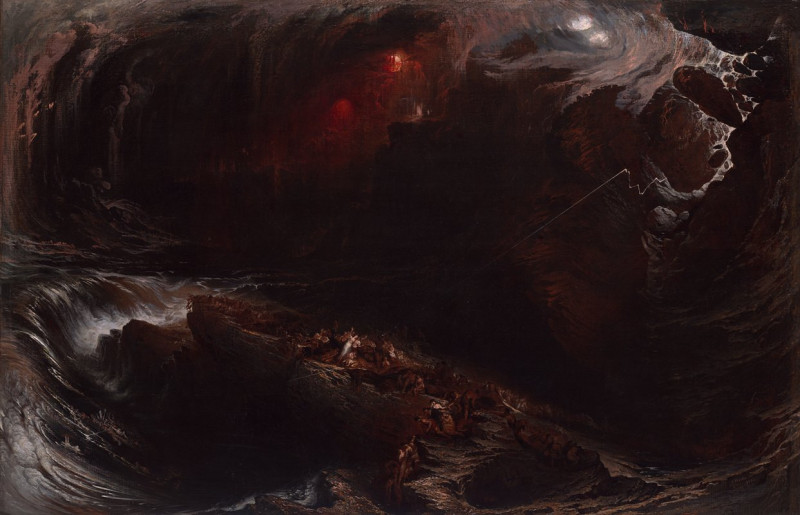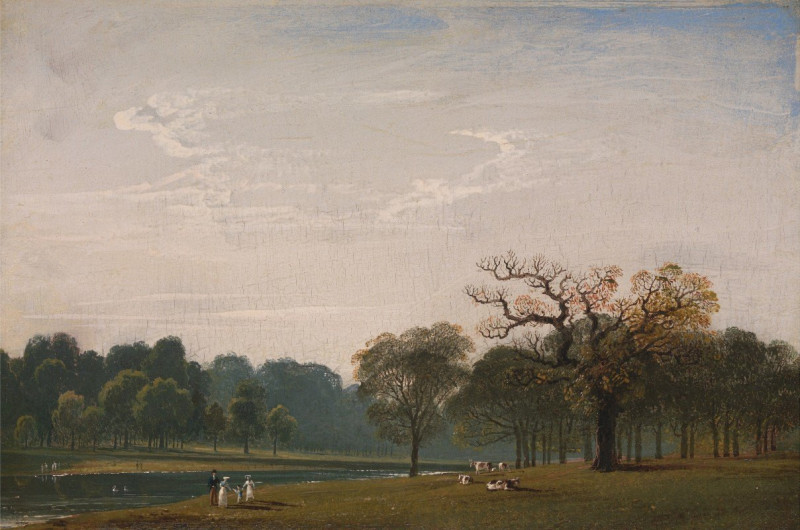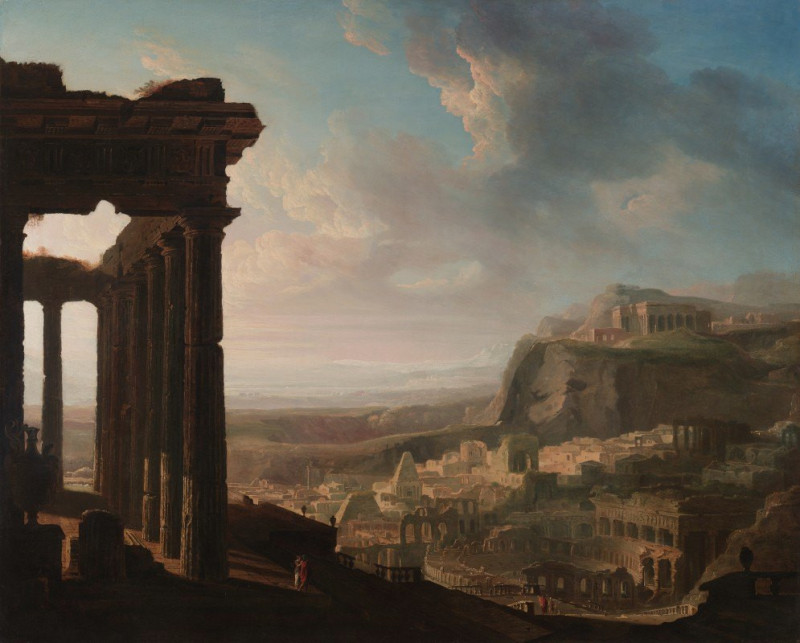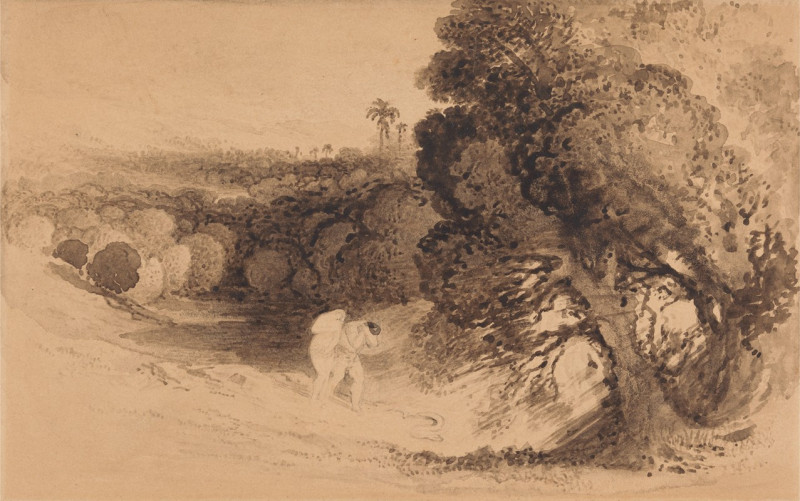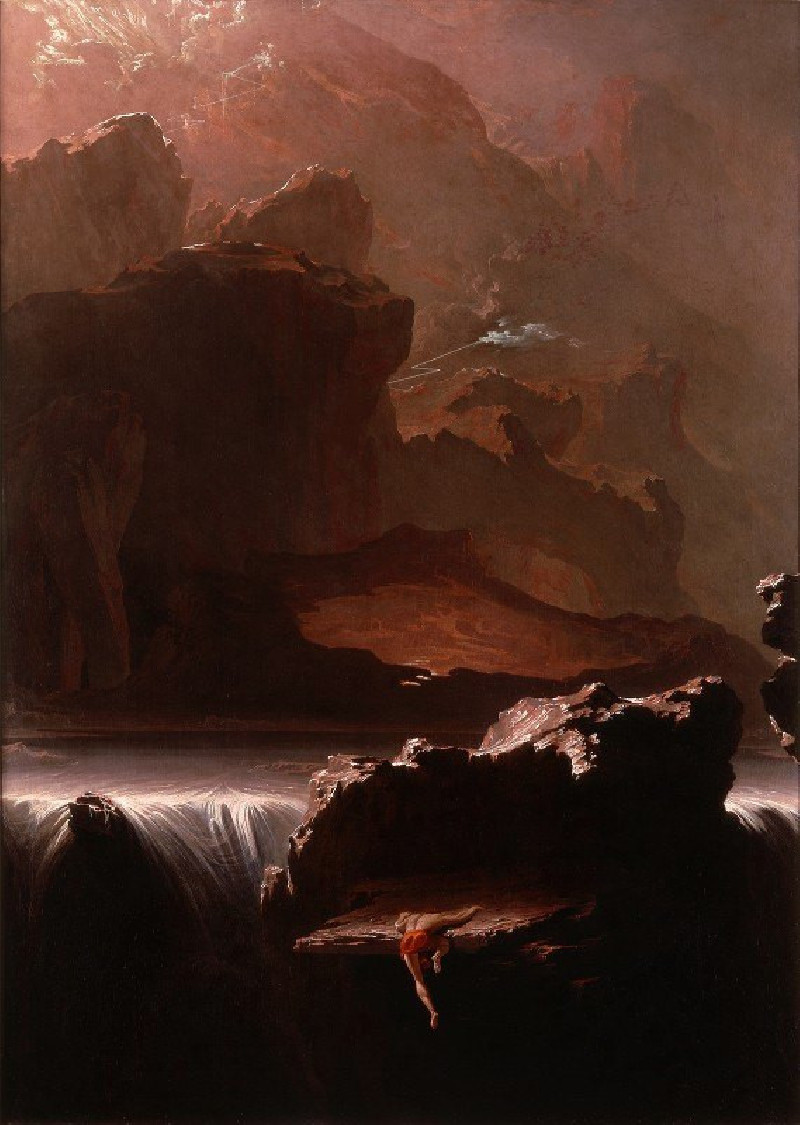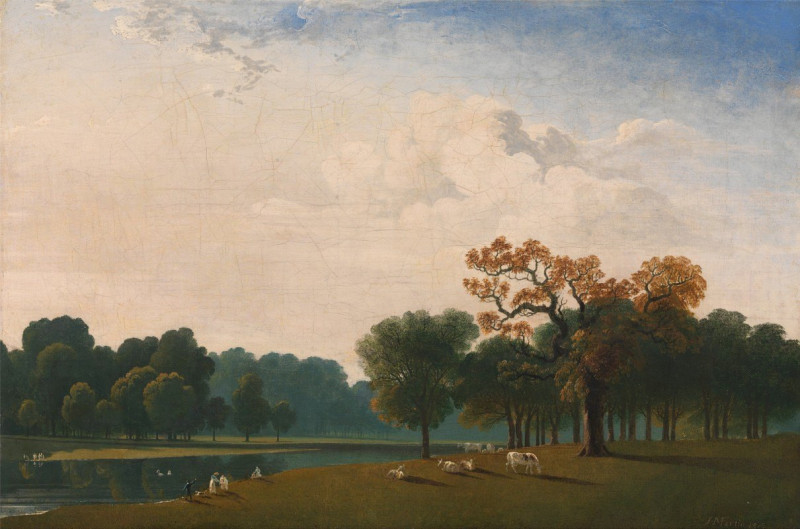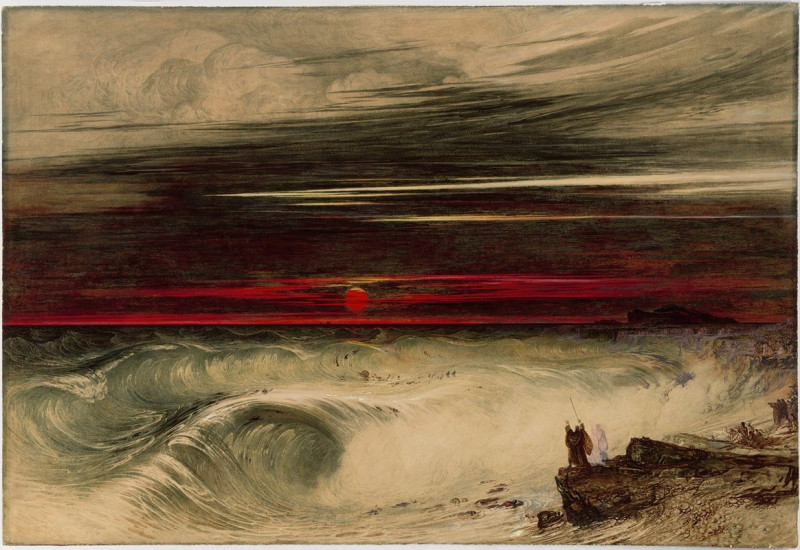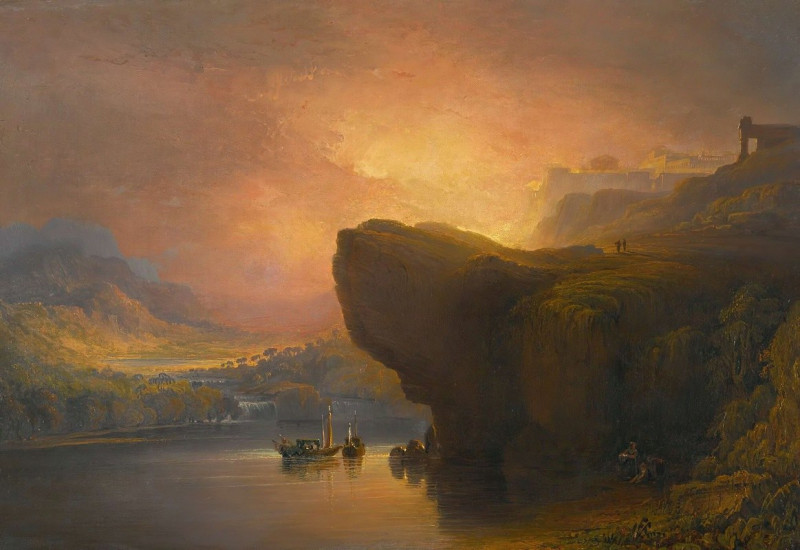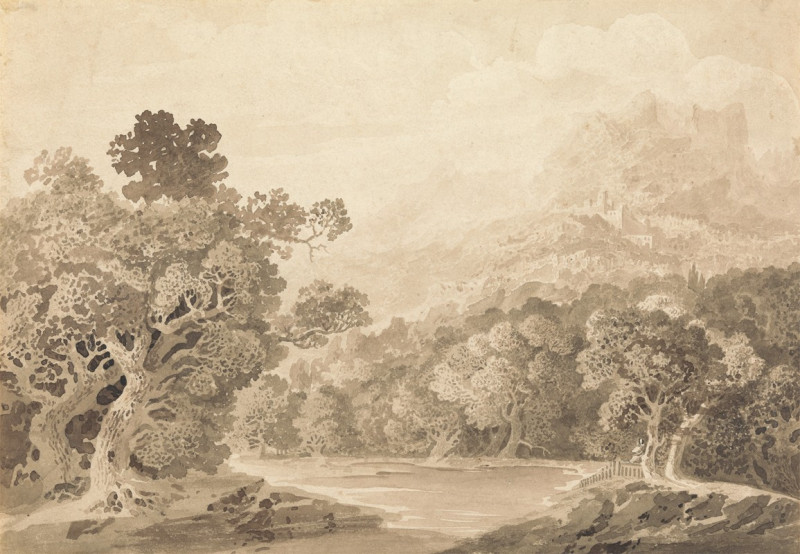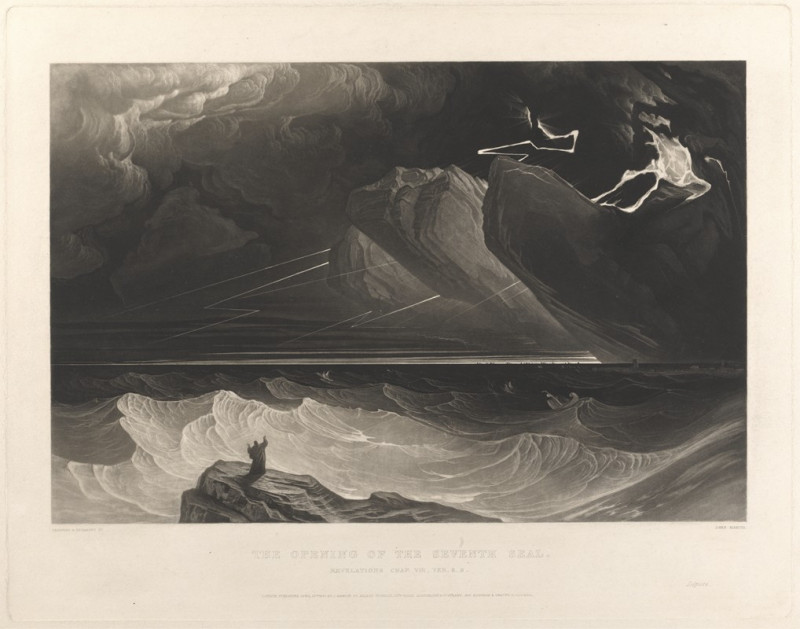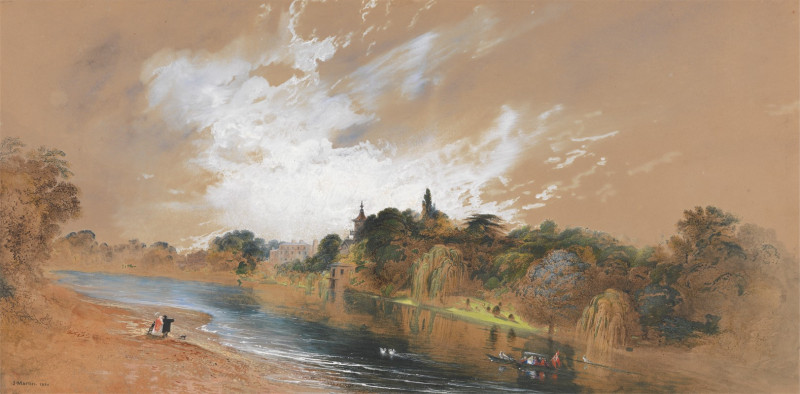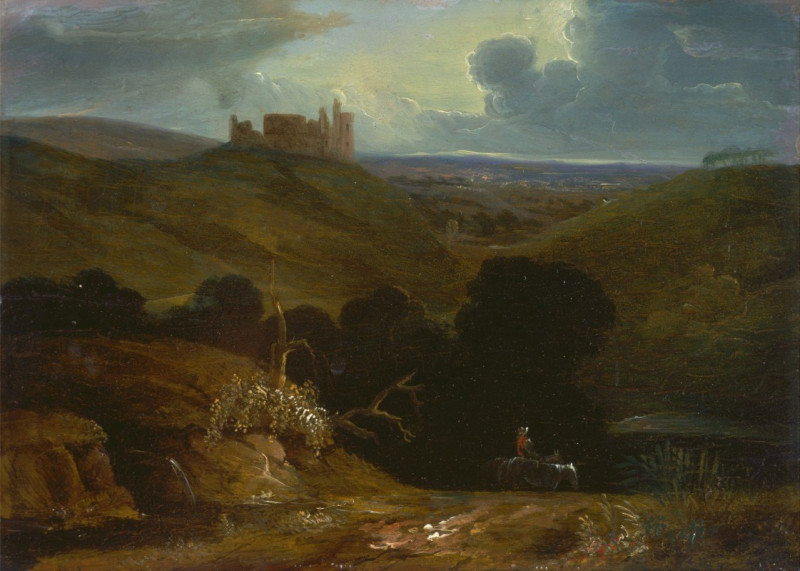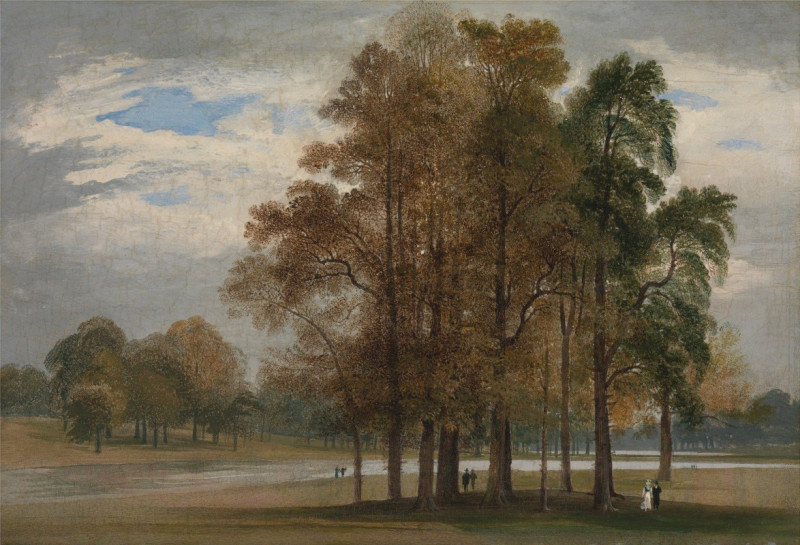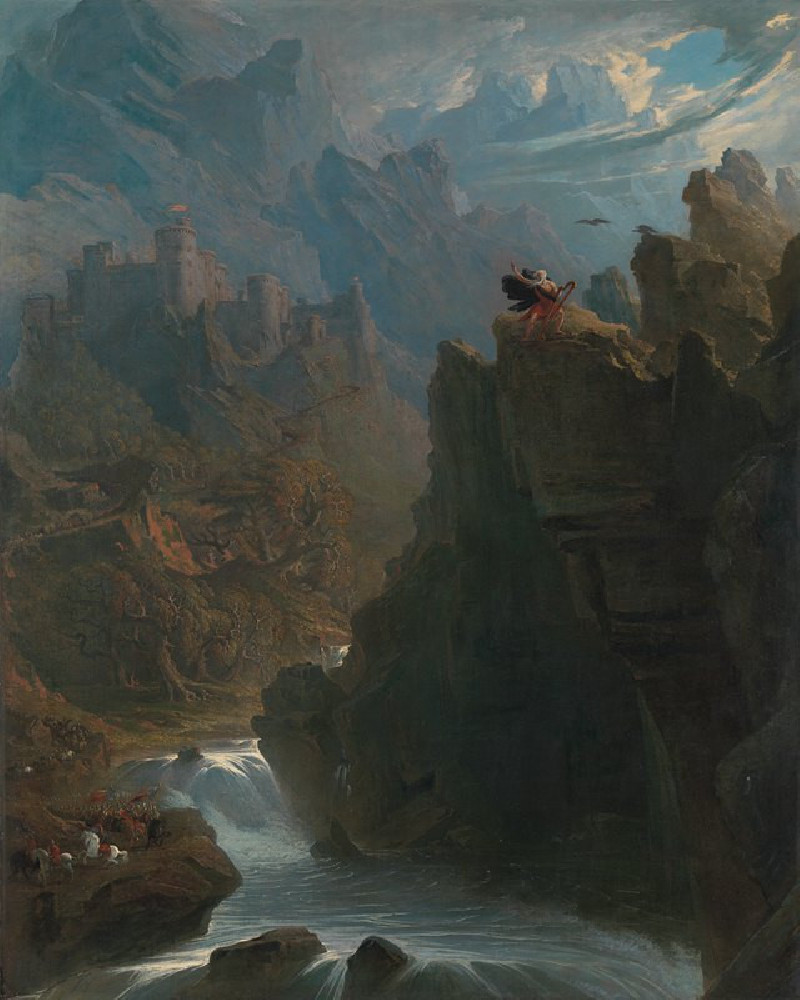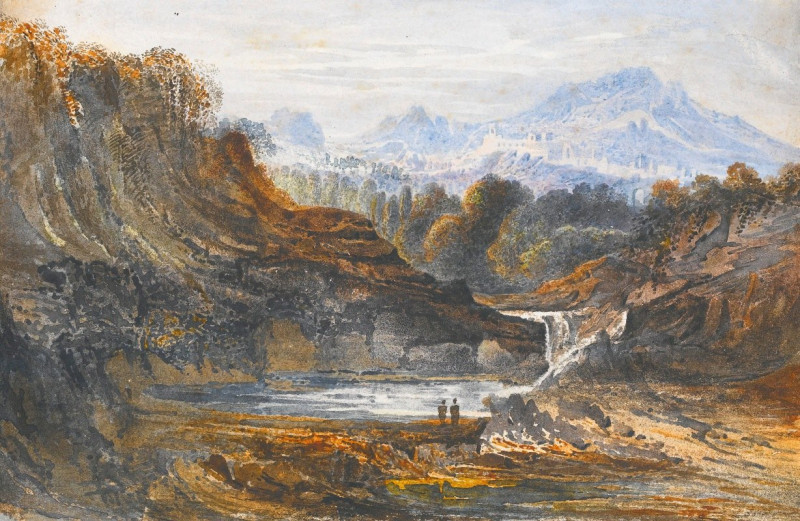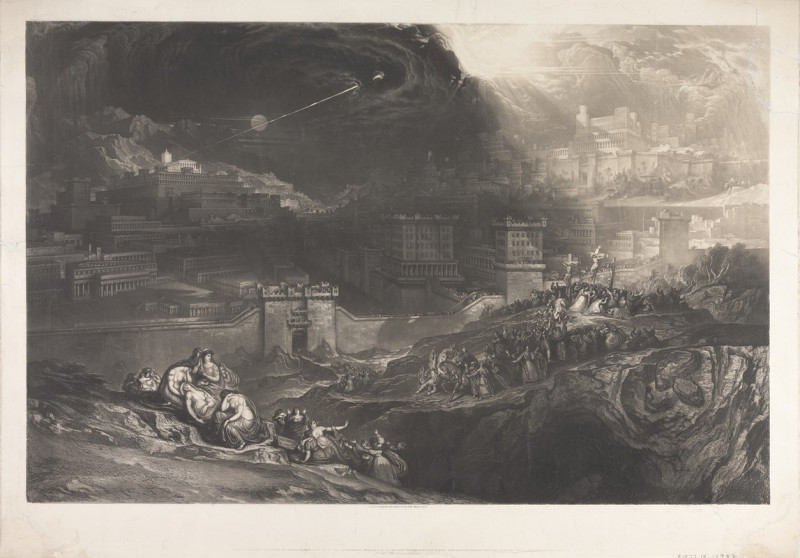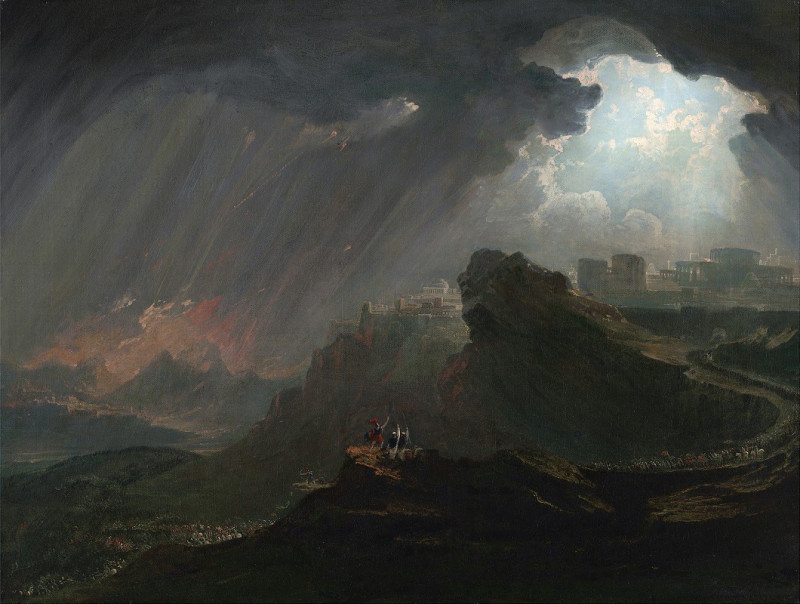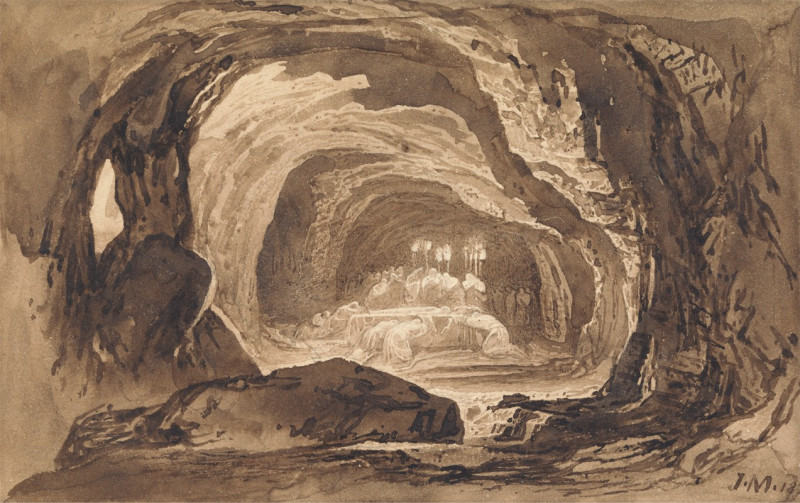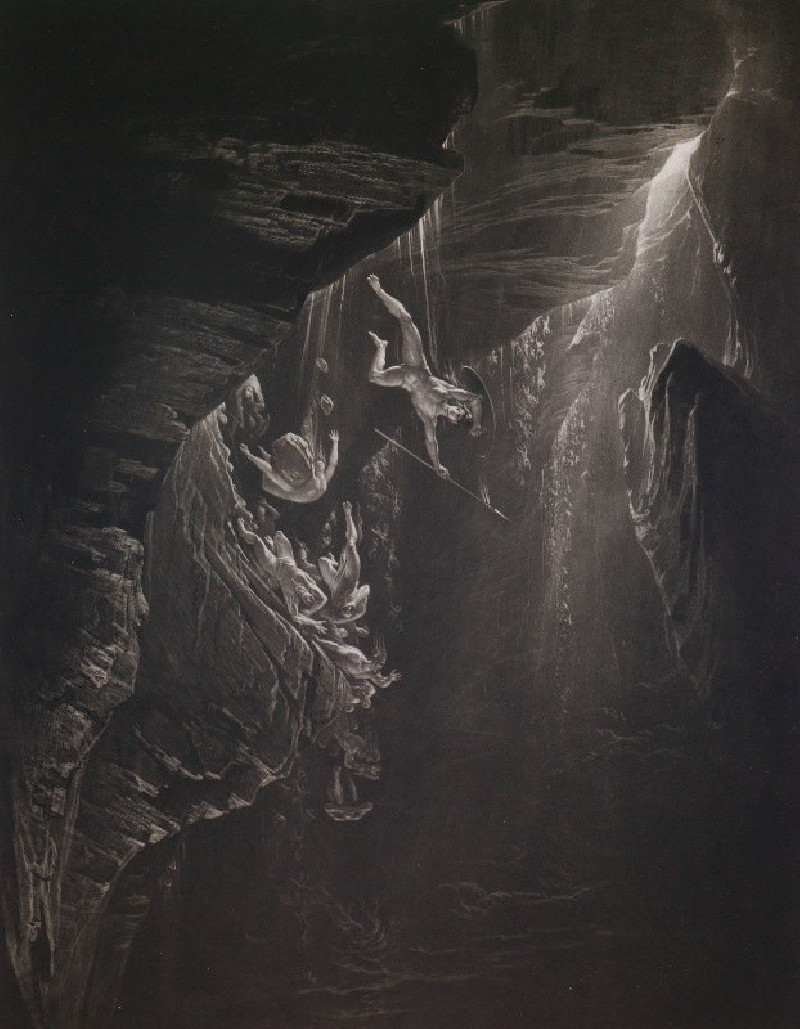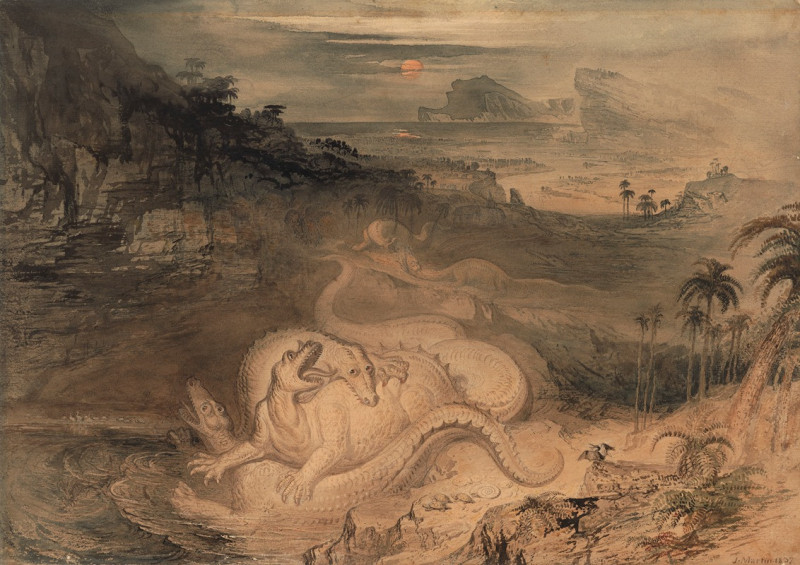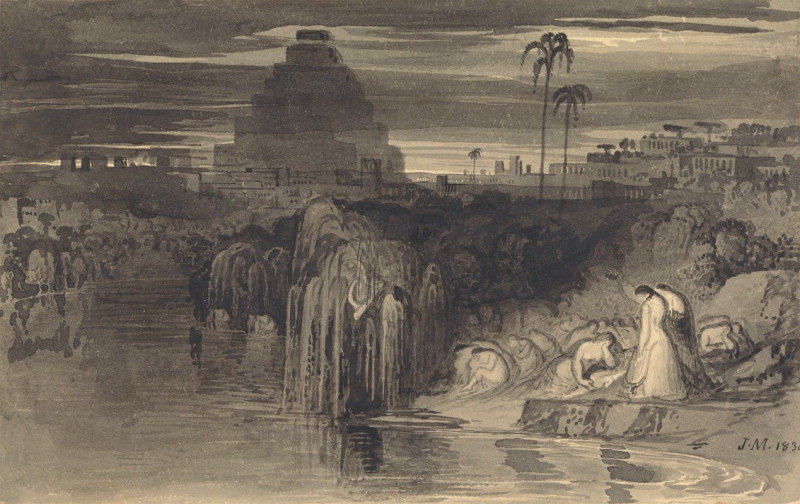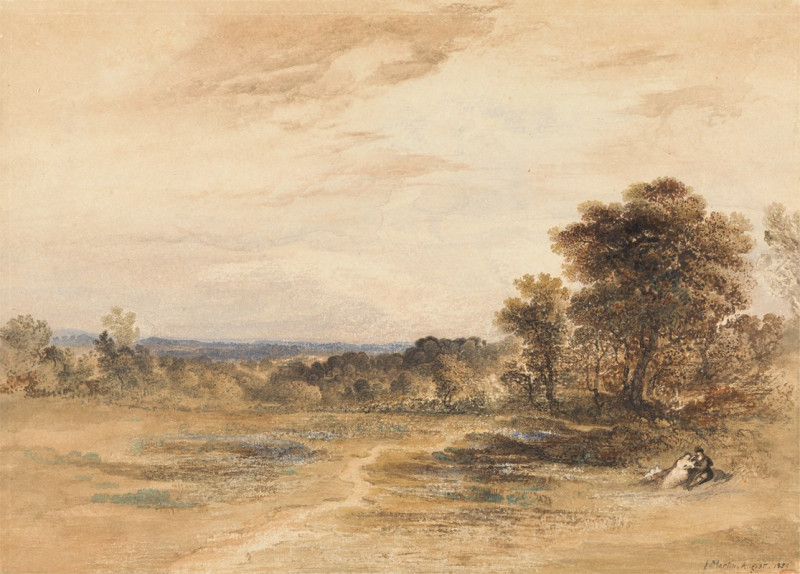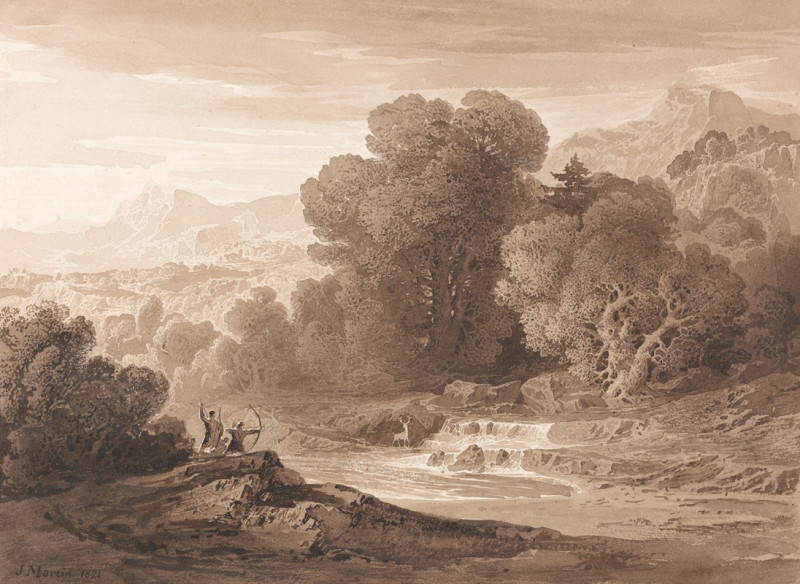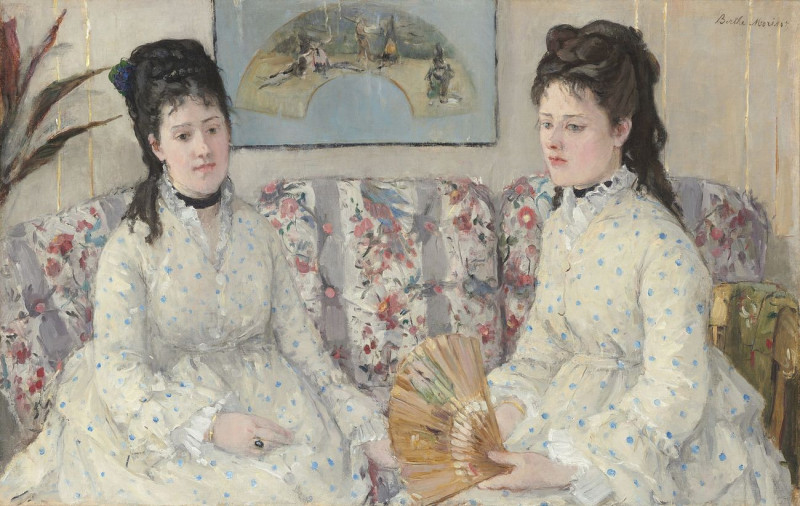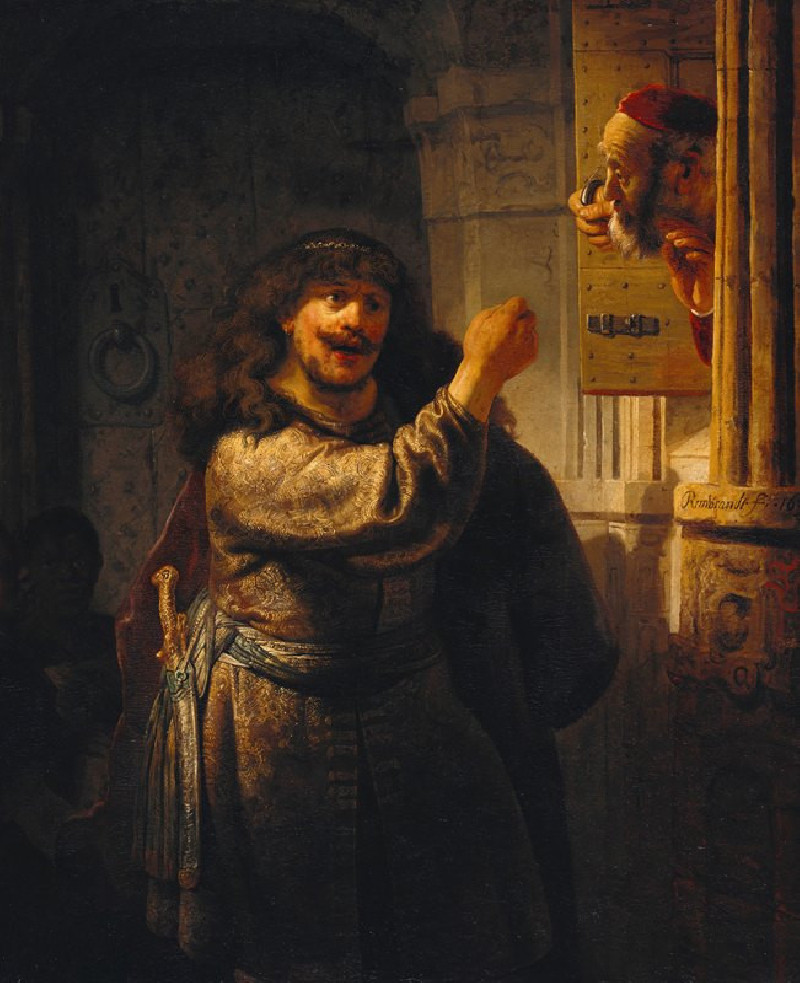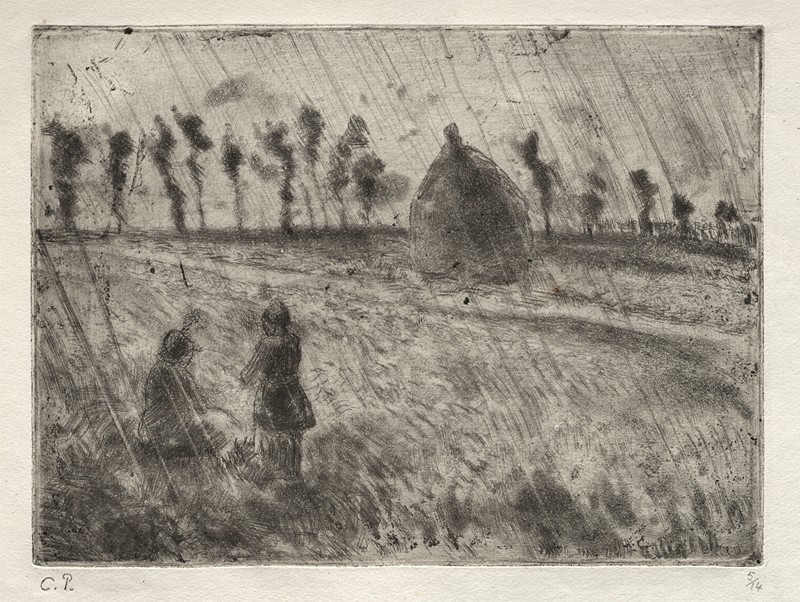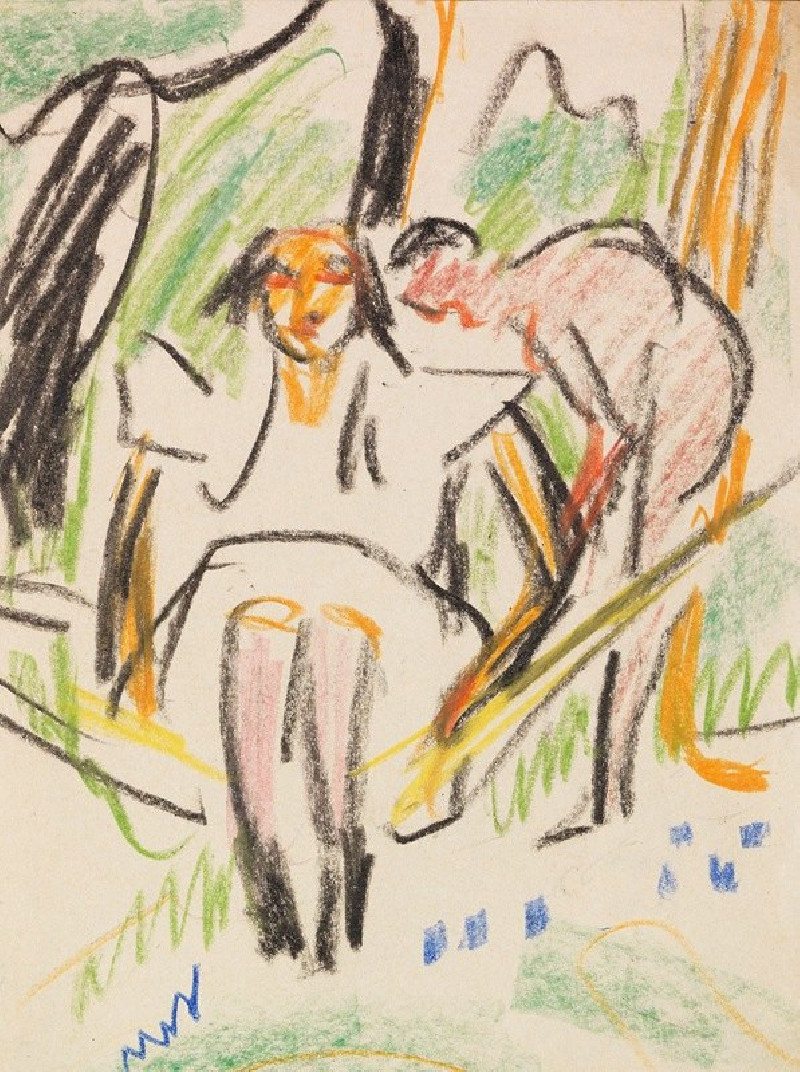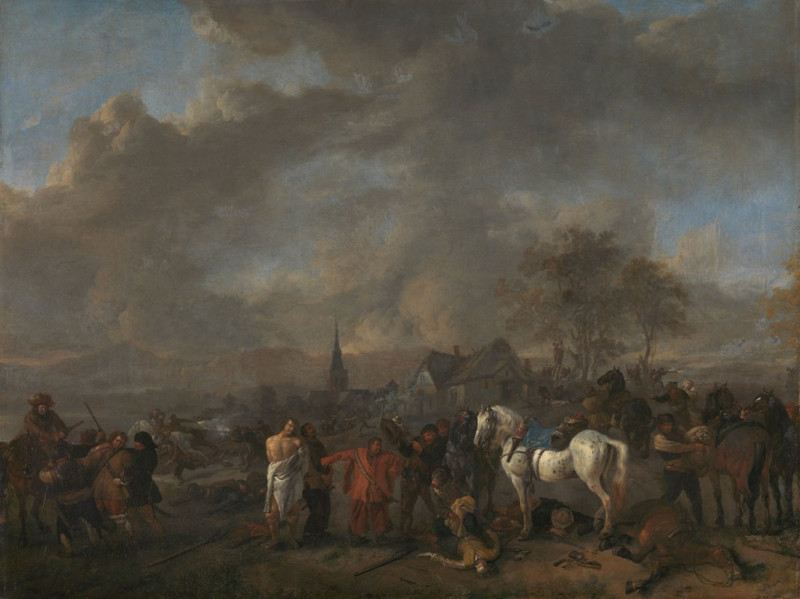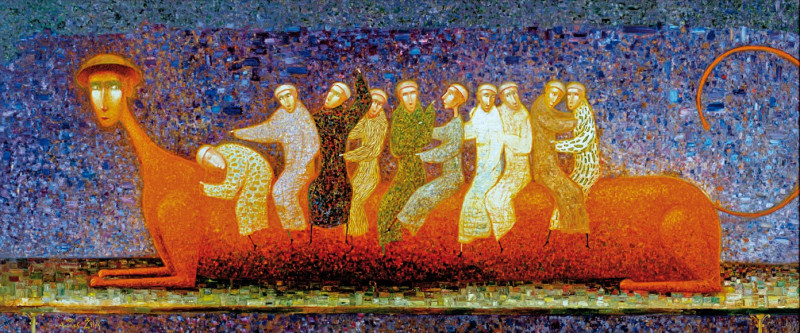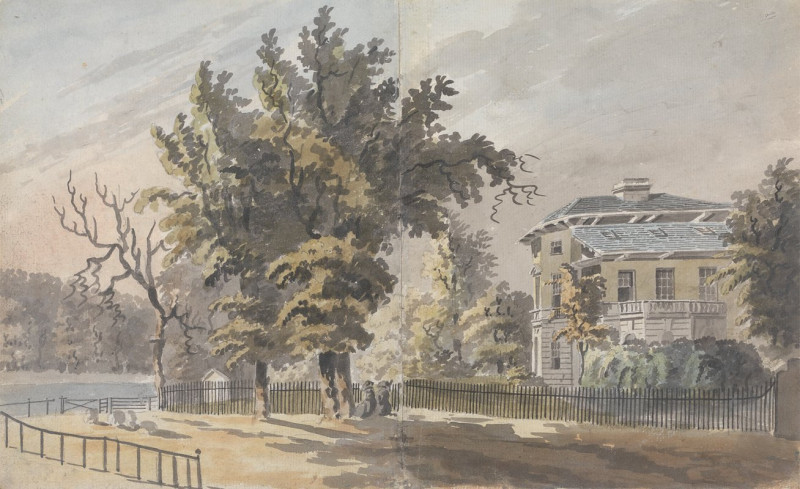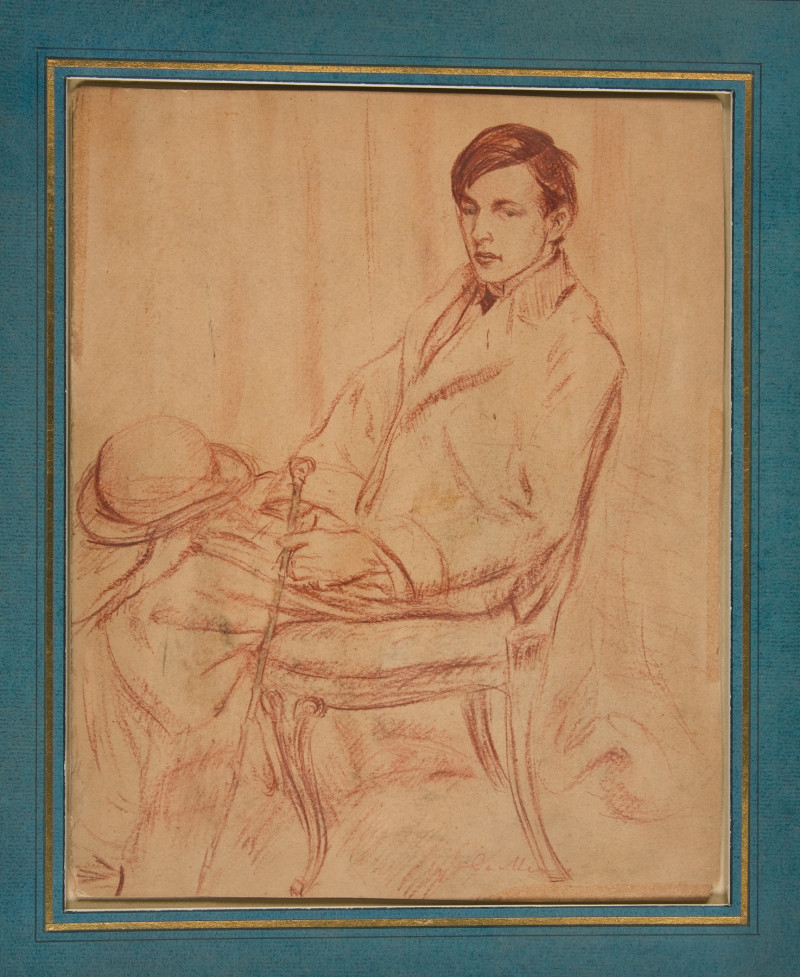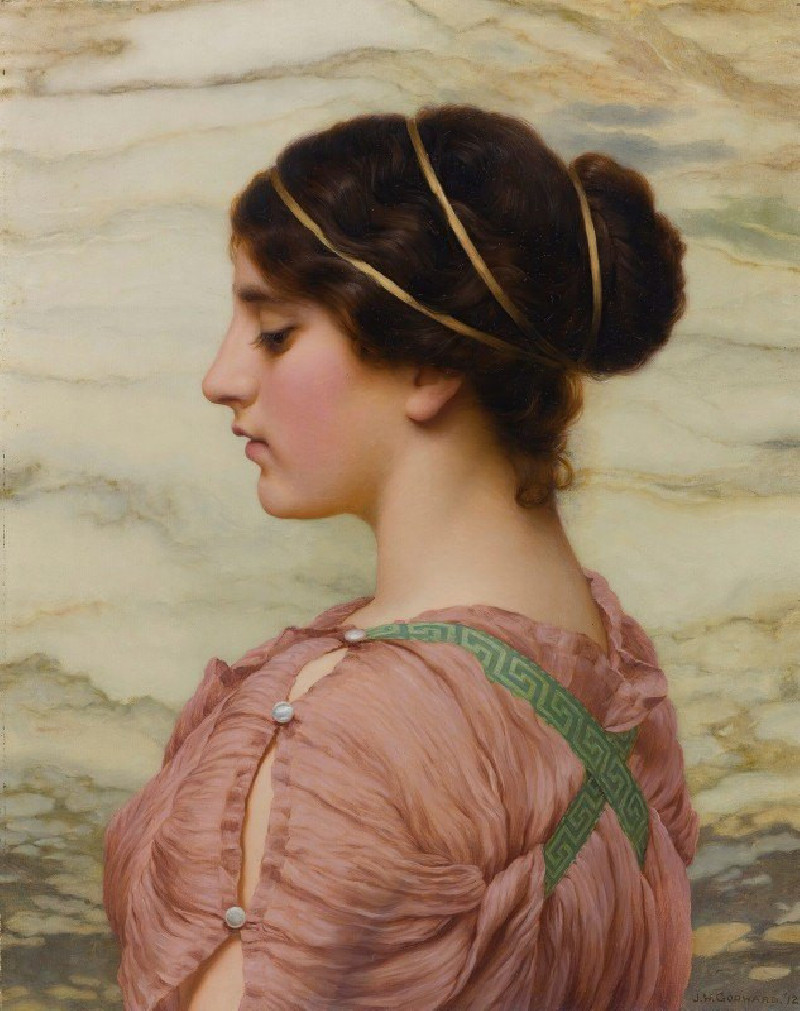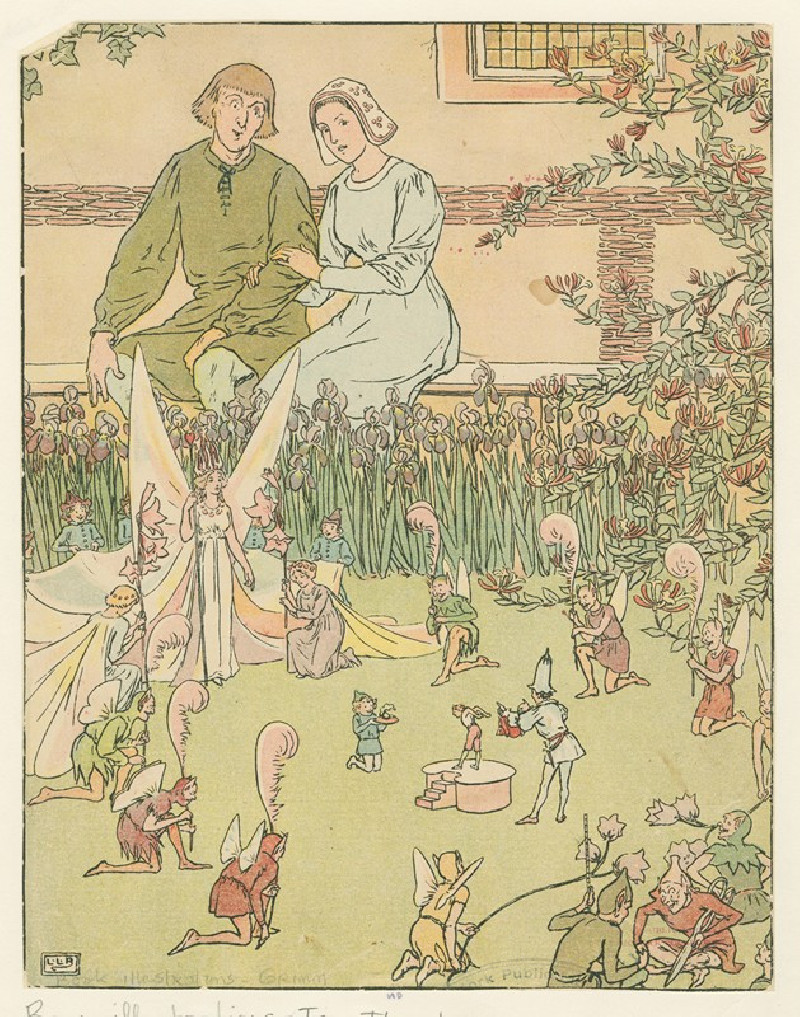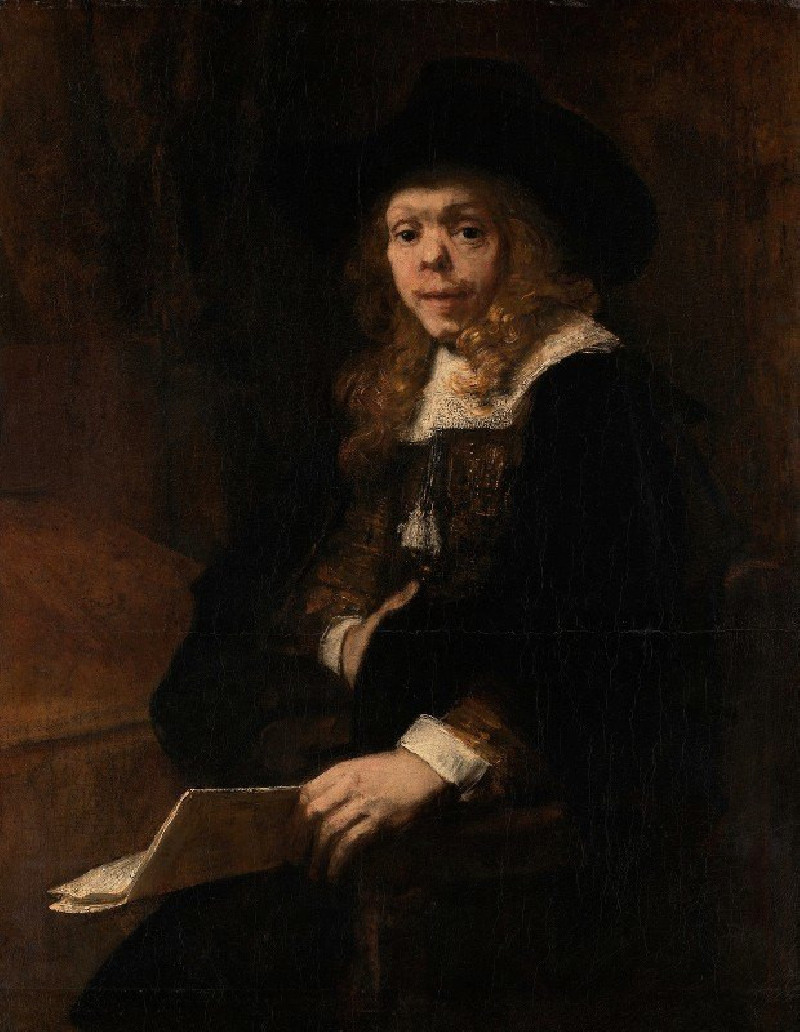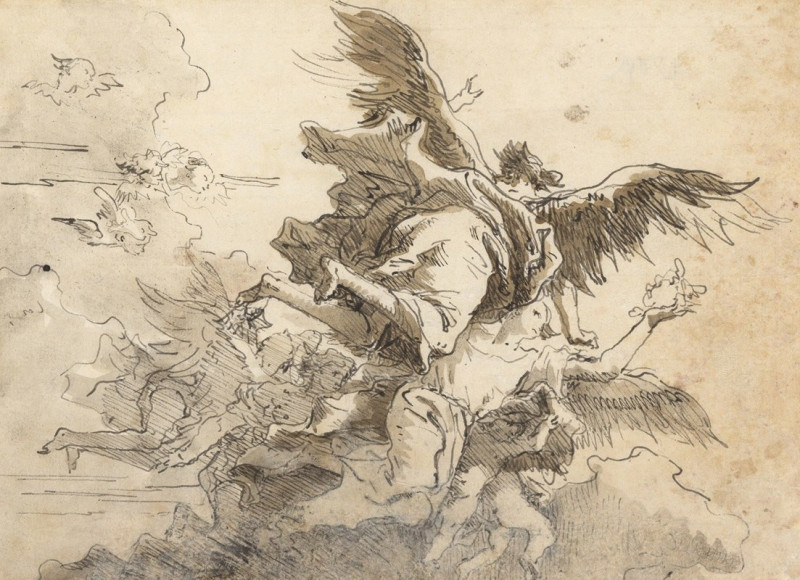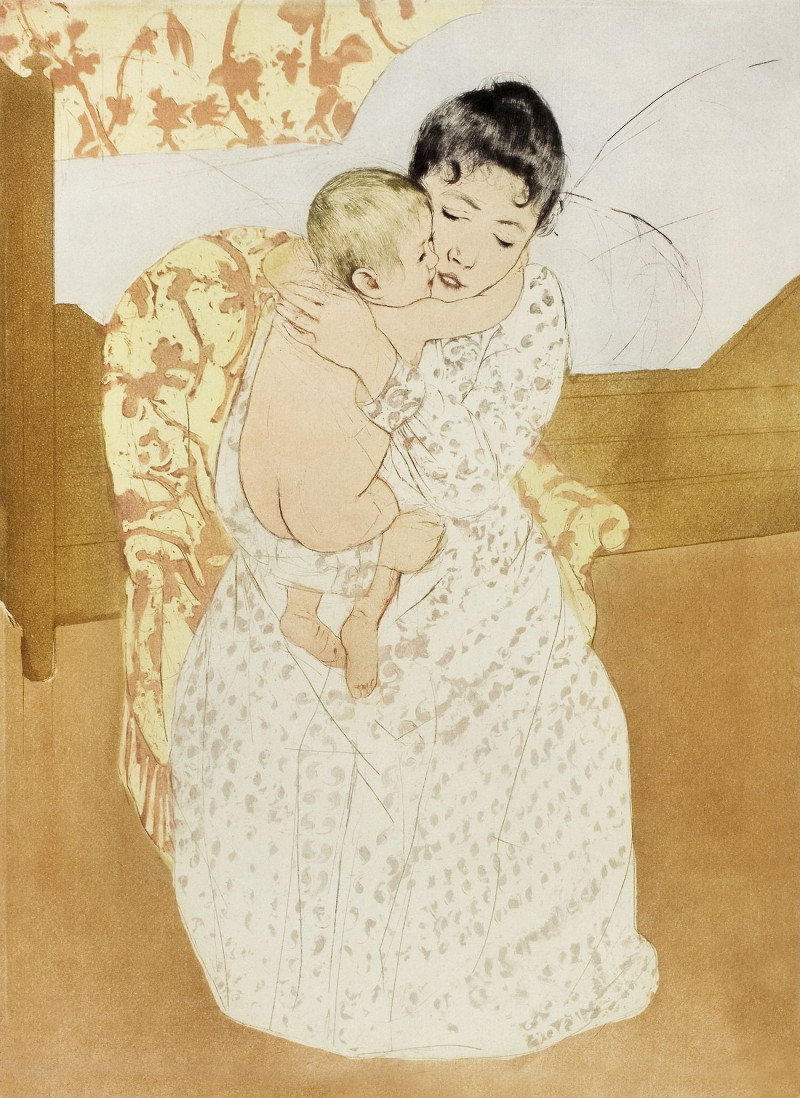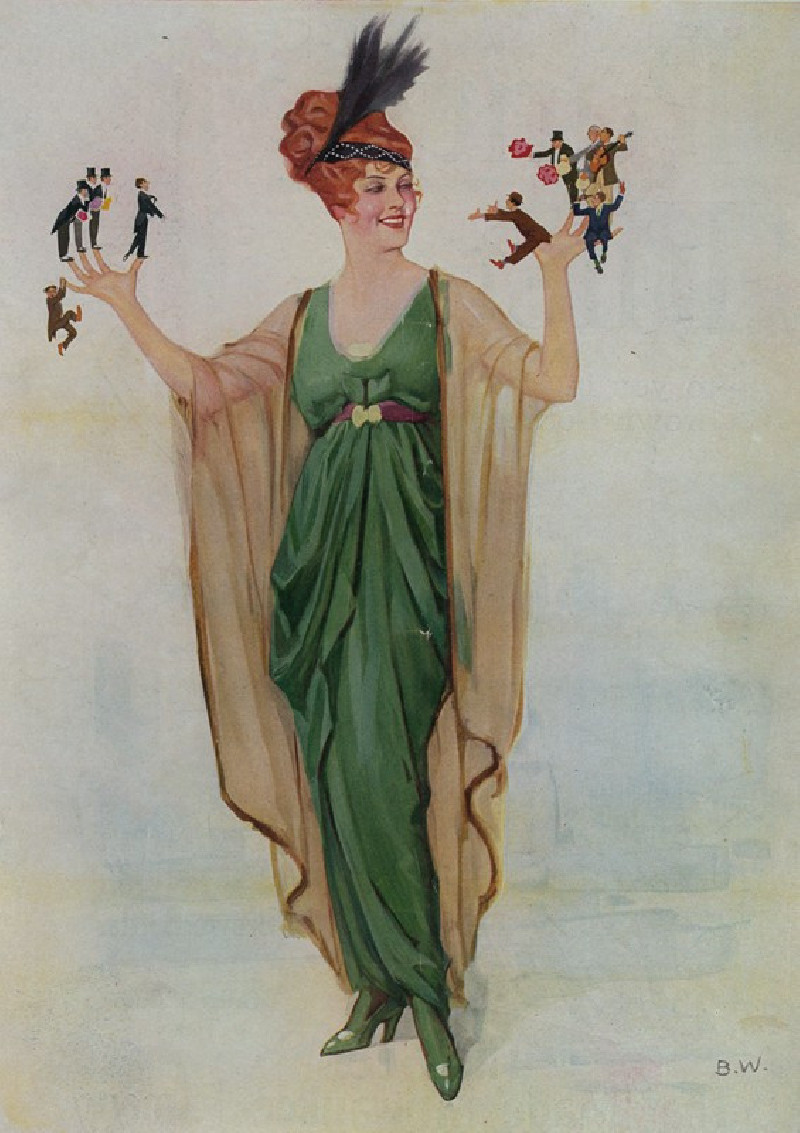The Deluge (1834)
Technique: Giclée quality print
Recommended by our customers
More about this artwork
John Martin's 1834 masterpiece, "The Deluge," is a striking example of the artist's renowned ability to blend the dramatic with the sublime. This painting plunges the viewer into the terrifying moments of a biblical flood, portraying a narrative of chaos and despair that unfolds on a near-cinematic scale.In "The Deluge," Martin employs dark, tumultuous hues to evoke a sense of overwhelming doom. The composition is dominated by immense waves and swirling waters that seem to engulf the landscape, embodying the unstoppable force of nature unleashed. The sky is rendered with ominous tones, pierced occasionally by bursts of red and white light that suggest both divine judgment and the raw power of elemental forces at play.At the center of this chaotic landscape, tiny human figures are depicted in various states of distress, desperately clinging to remnants of the land. These figures, though minute in the vast expanse of the scene, draw the eye and emphasize the frailty of humanity in the face of such cataclysmic events."The Deluge" is an exemplar of Romanticism, showcasing Martin’s fascination with nature’s might and mankind’s vulnerability. The painting does more than just tell a biblical story; it speaks to the universal themes of human suffering, the fear of unknown forces, and the timeless struggle against annihilation.Displayed prominently in our collection, this painting invites viewers to reflect on the power of nature and the human spirit’s capacity to endure through trials of epic proportions.
Delivery
Returns
John Martin was an English Romantic painter, engraver and illustrator. He was celebrated for his typically vast and melodramatic paintings of religious subjects and fantastic compositions, populated with minute figures placed in imposing landscapes. Martin's paintings, and the prints made from them, enjoyed great success with the general public—in 1821 Thomas Lawrence referred to him as "the most popular painter of his day"—but were lambasted by John Ruskin and other critics.

